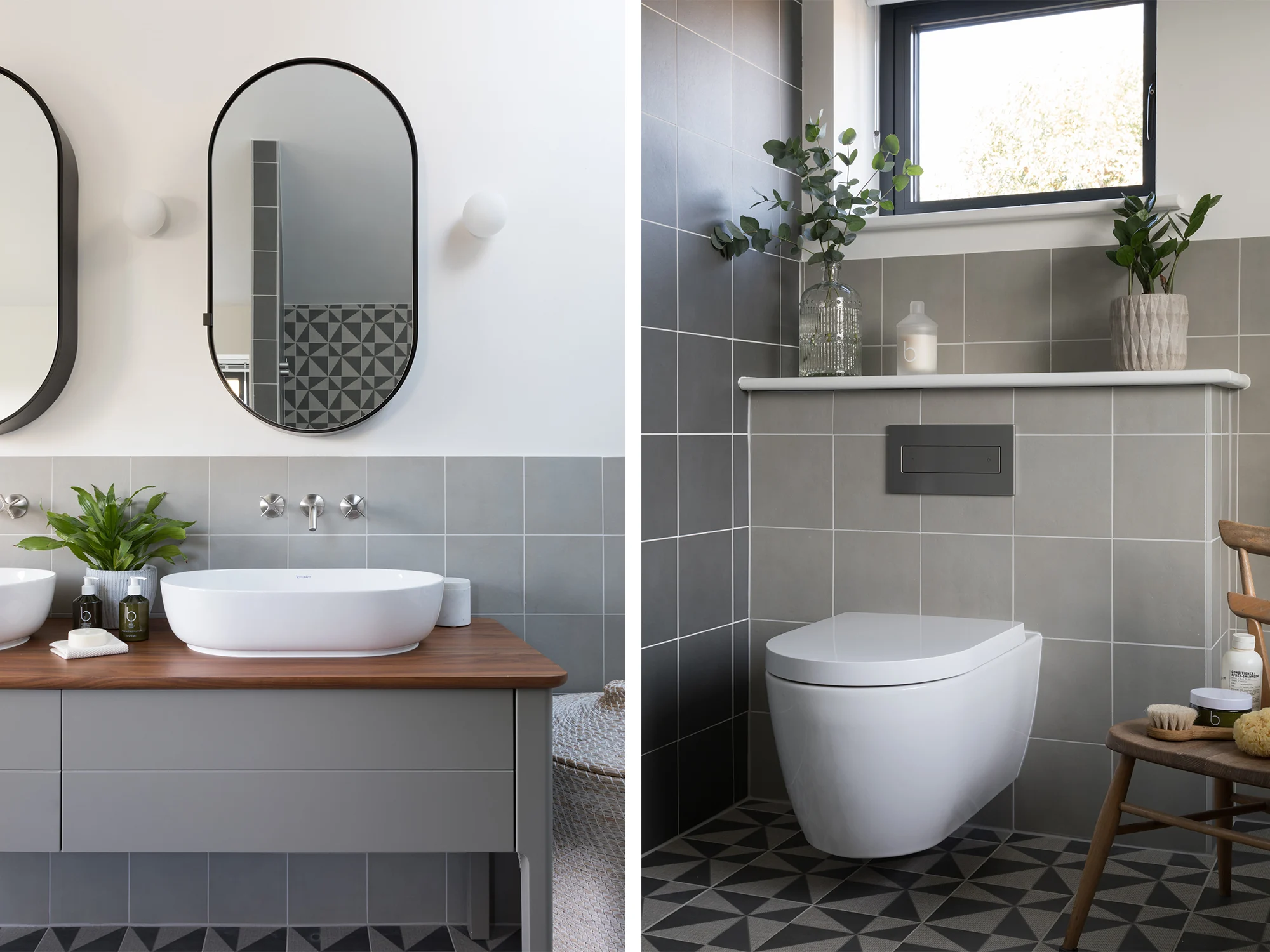Designing a bathroom involves several considerations, including layout, fixtures, materials, and aesthetic preferences. Here’s a step-by-step guide to help you plan and design your bathroom:
- Set a Budget: Determine how much you’re willing to spend on your bathroom renovation or redesign. This will help you prioritize expenses and make decisions accordingly.
- Measure the Space: Take accurate measurements of your bathroom, including dimensions and the location of existing plumbing fixtures, doors, and windows. This will help you plan the layout and choose appropriately sized fixtures and fittings.
- Define Your Needs and Preferences: Consider who will be using the bathroom and how it will be used. Identify your must-have features, such as a bathtub, shower, double vanity, or storage space, as well as any specific design preferences or styles you want to incorporate.
- Plan the Layout: Determine the best layout for your bathroom based on its size, shape, and existing plumbing. Consider factors such as traffic flow, accessibility, and functionality when arranging fixtures and fittings. Explore different layout options to find the most efficient and practical configuration.
- Select Fixtures and Fittings: Choose fixtures and fittings that align with your needs, preferences, and budget. This includes items such as toilets, sinks, faucets, showers, bathtubs, vanities, mirrors, lighting, and hardware. Consider factors such as style, size, finish, and functionality when making selections.
- Consider Storage Solutions: Incorporate adequate storage solutions to keep your bathroom organized and clutter-free. This may include built-in cabinets, shelving, vanity drawers, medicine cabinets, or floating shelves. Optimize vertical space and utilize unused areas to maximize storage capacity.
- Choose Materials and Finishes: Select materials and finishes that are durable, water-resistant, and easy to maintain. Common materials used in bathrooms include tiles (ceramic, porcelain, stone), countertops (granite, marble, quartz), flooring (ceramic, porcelain, vinyl, natural stone), and wall finishes (paint, wallpaper, tile). Pay attention to color, texture, and pattern to create a cohesive and visually appealing design.
- Focus on Lighting: Plan for adequate lighting in your bathroom to ensure functionality, safety, and ambiance. Incorporate a combination of task lighting, ambient lighting, and accent lighting to illuminate different areas and create the desired atmosphere. Consider natural light sources, such as windows and skylights, as well as artificial lighting options, such as overhead fixtures, vanity lights, sconces, and LED strips.
- Add Personal Touches: Incorporate personal touches and decorative elements to enhance the visual appeal of your bathroom. This may include artwork, plants, decorative accessories, textiles (towels, rugs, shower curtains), and accent pieces (mirrors, hardware, fixtures). Choose items that complement your overall design scheme and reflect your style.
- Seek Professional Assistance: If you’re unsure about certain aspects of your bathroom design or if you’re undertaking a major renovation, consider hiring a professional designer or contractor. A skilled professional can provide valuable expertise, guidance, and resources to help you bring your vision to life and ensure a successful outcome.
By following these steps and carefully planning your bathroom design, you can create a functional, stylish, and comfortable space that meets your needs and reflects your personal taste and lifestyle.
